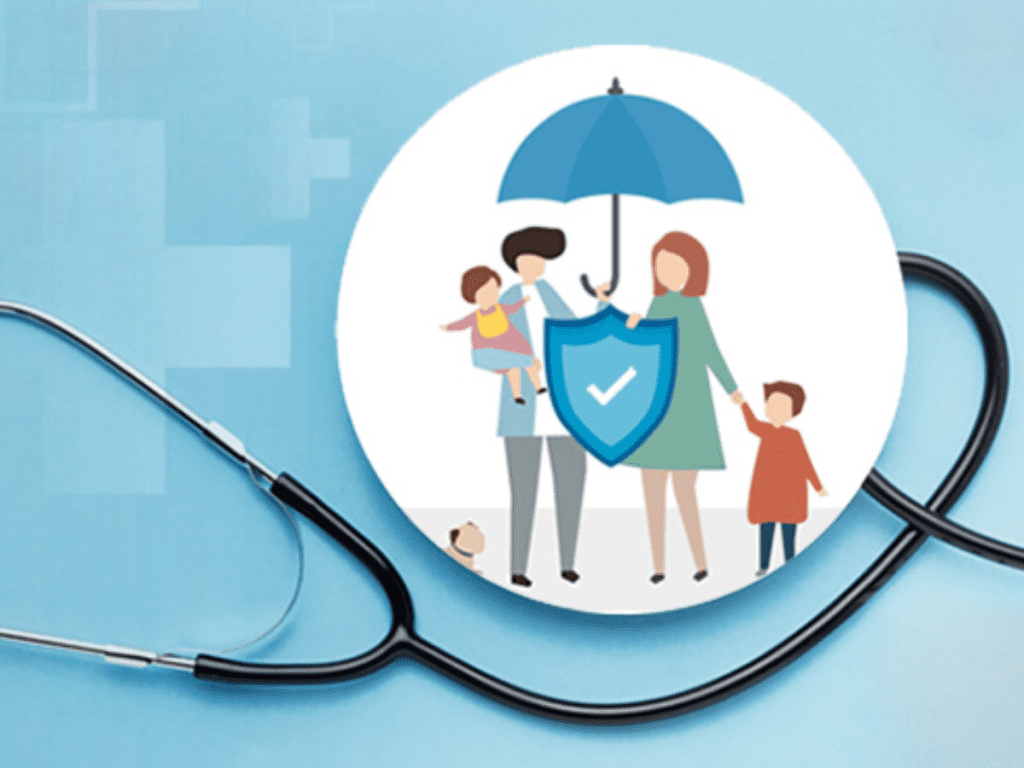Introduction
Health insurance is one of the most important financial tools available to individuals and families. It helps protect against unexpected medical expenses and offers peace of mind during times of illness or injury. However, reading and understanding a health insurance policy document can be a daunting task. The language is often technical, the structure is complex, and many people end up confused about what is actually covered. This guide aims to break down how to read a health insurance policy document and truly understand what’s included, what’s excluded, and how to get the most out of your coverage.
Start With the Summary of Benefits and Coverage (SBC)
The first section you should look at in a health insurance policy is the Summary of Benefits and Coverage (SBC). This section gives an overview of the policy and is designed to be consumer-friendly. It will typically include a list of the types of care that are covered, cost-sharing information such as copays and coinsurance, and examples of how the plan would pay for common services like maternity care or managing diabetes.
The SBC is the most digestible portion of the policy, so it’s a great place to begin. While it won’t give you every detail, it will help you decide if the plan is worth exploring further.
Understand the Structure of the Policy Document
A full health insurance policy document is usually long and detailed. It can be broken down into key sections:
- Declarations Page: Includes your name, policy number, coverage start and end dates, and sometimes your premium cost.
- Definitions: Clarifies key terms like “pre-existing condition,” “in-network provider,” and “out-of-pocket maximum.” Always read this section carefully.
- Coverage Details: Describes what the policy covers, under what conditions, and the extent of coverage.
- Exclusions and Limitations: Lists what the policy does not cover.
- Claim Procedures: Explains how to file a claim and how claims are processed.
- Appeals and Grievances: Describes your rights if a claim is denied.
- Legal Notices: Covers your rights under federal laws like HIPAA or the Affordable Care Act.
Knowing this structure helps you navigate to the right sections when you have specific questions.
Pay Attention to Definitions
Words used in health insurance policies may have very specific meanings that differ from everyday use. For example, “medically necessary” doesn’t mean what you or your doctor think is necessary—it means what the insurance company defines as necessary according to their criteria. Similarly, “emergency” may have a narrower meaning than you expect.
Take time to read the Definitions section. Understanding these terms will help you avoid surprises when a service is denied or only partially covered.
Check the Covered Services
The heart of any insurance policy is what it actually covers. The Coverage section will outline types of care that are included, such as:
- Hospitalization
- Emergency services
- Prescription drugs
- Preventive care
- Mental health services
- Maternity and newborn care
- Pediatric services
Each of these may have conditions, limits, or special rules. For instance, hospitalization might be covered only if pre-authorized, or preventive services may only be free if performed by an in-network provider.
Make sure to check the details. For example, not all prescriptions are automatically covered. Some may require prior authorization, or only certain brands might be included in the formulary (approved drug list).
Understand the Cost Structure
Even if something is covered, you may have to share the cost. There are several types of cost-sharing to be aware of:
- Premium: The monthly amount you pay to keep the insurance active.
- Deductible: The amount you pay out-of-pocket before your insurance starts covering expenses.
- Copayment (Copay): A fixed fee you pay for a covered service (e.g., $30 for a doctor visit).
- Coinsurance: A percentage of the cost you pay after the deductible is met (e.g., 20% of the cost of surgery).
- Out-of-Pocket Maximum: The most you will have to pay in a year for covered services. After reaching this amount, the insurance pays 100%.
Review these numbers closely. A lower premium may come with a higher deductible and coinsurance. Choose a plan that balances monthly affordability with manageable costs when you need care.
Look for Provider Network Information
Most insurance plans operate with a provider network—doctors, hospitals, and clinics that agree to charge discounted rates. Plans are usually one of the following:
- HMO (Health Maintenance Organization): Requires you to use only in-network providers and get referrals for specialists.
- PPO (Preferred Provider Organization): Lets you see out-of-network providers but at a higher cost.
- EPO (Exclusive Provider Organization): Only covers services from in-network providers, but no referrals are required.
- POS (Point of Service): Requires referrals but offers partial coverage for out-of-network care.
Check which providers are in your plan’s network. Going out-of-network can lead to much higher costs or complete denial of coverage.
Be Aware of Exclusions and Limitations
The Exclusions section lists treatments and services that are not covered under any circumstance. This may include:
- Cosmetic surgery
- Experimental treatments
- Infertility treatments
- Weight loss surgery
- Adult dental and vision (unless separate plans are offered)
Additionally, even covered services might have limitations. For example, physical therapy might be covered but limited to 20 visits per year. Always look at the fine print to see how many times a service is allowed or if there are dollar limits.
Understand Pre-Authorization Requirements
Many services require pre-authorization, also known as prior approval. This means your insurance company must approve the service before you receive it in order to be covered. This often applies to:
- Elective surgeries
- Specialty drugs
- Advanced imaging (like MRIs)
- Extended hospital stays
Failing to get pre-authorization can result in the insurance refusing to pay, leaving you responsible for the full cost. Make sure to understand which services need prior approval and how to request it.
Learn About Preventive Care
Under the Affordable Care Act, most health plans must cover preventive services without charging a copayment or coinsurance, even if you haven’t met your deductible. This includes services like:
- Annual physicals
- Screenings (blood pressure, cholesterol, diabetes)
- Vaccines
- Certain cancer screenings
- Well-woman and well-baby visits
However, this rule generally applies only to in-network providers, and only if the services are classified as preventive rather than diagnostic.
Look Into Emergency and Urgent Care Coverage
Emergency services are generally covered regardless of the hospital or provider, but what counts as an emergency can vary. If your condition doesn’t meet the insurance company’s definition of an emergency, you could be charged the full out-of-network rate.
Urgent care centers, which are different from emergency rooms, may not be covered unless in-network. Read the policy to understand where you can go and what you’ll owe in these situations.
Don’t Overlook Mental Health and Substance Abuse Coverage
Mental health services are often covered under the same terms as physical health, thanks to mental health parity laws. Still, access can be limited by provider networks or visit limits. Some plans require a separate deductible for mental health.
Substance abuse treatment is also covered under many plans but may involve specific facilities or programs. Always check what’s covered and any associated restrictions.
Read About Maternity and Newborn Coverage
Most health insurance plans cover maternity care and newborn health services, but the scope can vary. Some key points to check:
- Are prenatal visits and delivery fully covered?
- Is neonatal intensive care covered?
- Do you need to inform the insurer of a pregnancy to activate coverage?
- Is your OB/GYN in-network?
Also, check if the baby is automatically added to your policy after birth, or if you need to notify the insurer.
Review Prescription Drug Coverage
Prescription drugs are a major component of health insurance. Look for these elements in the drug coverage section:
- Formulary: A list of covered drugs, often divided into tiers. Generic drugs are usually cheaper.
- Cost-sharing: What you pay for each tier of drugs.
- Special requirements: Some drugs may need prior authorization or “step therapy,” where you must try cheaper drugs first.
Also, check whether your pharmacy is in-network. Some policies restrict you to certain pharmacies.
Learn the Claims and Appeals Process
Even with proper coverage, mistakes happen. Claims may be denied or processed incorrectly. Your policy will describe how to:
- Submit a claim if the provider doesn’t do it for you.
- Appeal a denied claim.
- Request an external review.
Make sure to act quickly. Most appeals have strict deadlines, usually within 60 to 180 days of denial.
Check for Additional Perks and Add-ons
Some health insurance policies include extra benefits not required by law, such as:
- Telehealth services
- Health coaching
- Discounts on fitness programs
- International emergency coverage
These benefits can add value to your policy, especially if you use them regularly. Check whether they’re automatically included or require separate enrollment.
Know Your Rights
Federal laws give you certain rights regarding your health insurance, such as:
- The right to receive an easy-to-understand summary.
- The right to appeal a denial.
- The right to coverage for emergency services.
- The right to privacy regarding your medical records.
Your policy will usually list these rights in the final sections. Don’t skip them.
Ask for Clarification
If any part of the document is unclear, contact the insurance company’s customer service. Ask them to explain in plain language. You can also request printed summaries or speak with a licensed insurance broker for guidance.
Final Thoughts
Reading a health insurance policy document may feel overwhelming at first, but taking it one section at a time can make it manageable. Focus on understanding the basics—what’s covered, what’s not, and how much you’ll pay. Pay attention to definitions, exclusions, cost-sharing details, and provider networks.
With this understanding, you’ll be better equipped to make informed healthcare decisions, avoid unexpected costs, and use your policy to its fullest potential.

